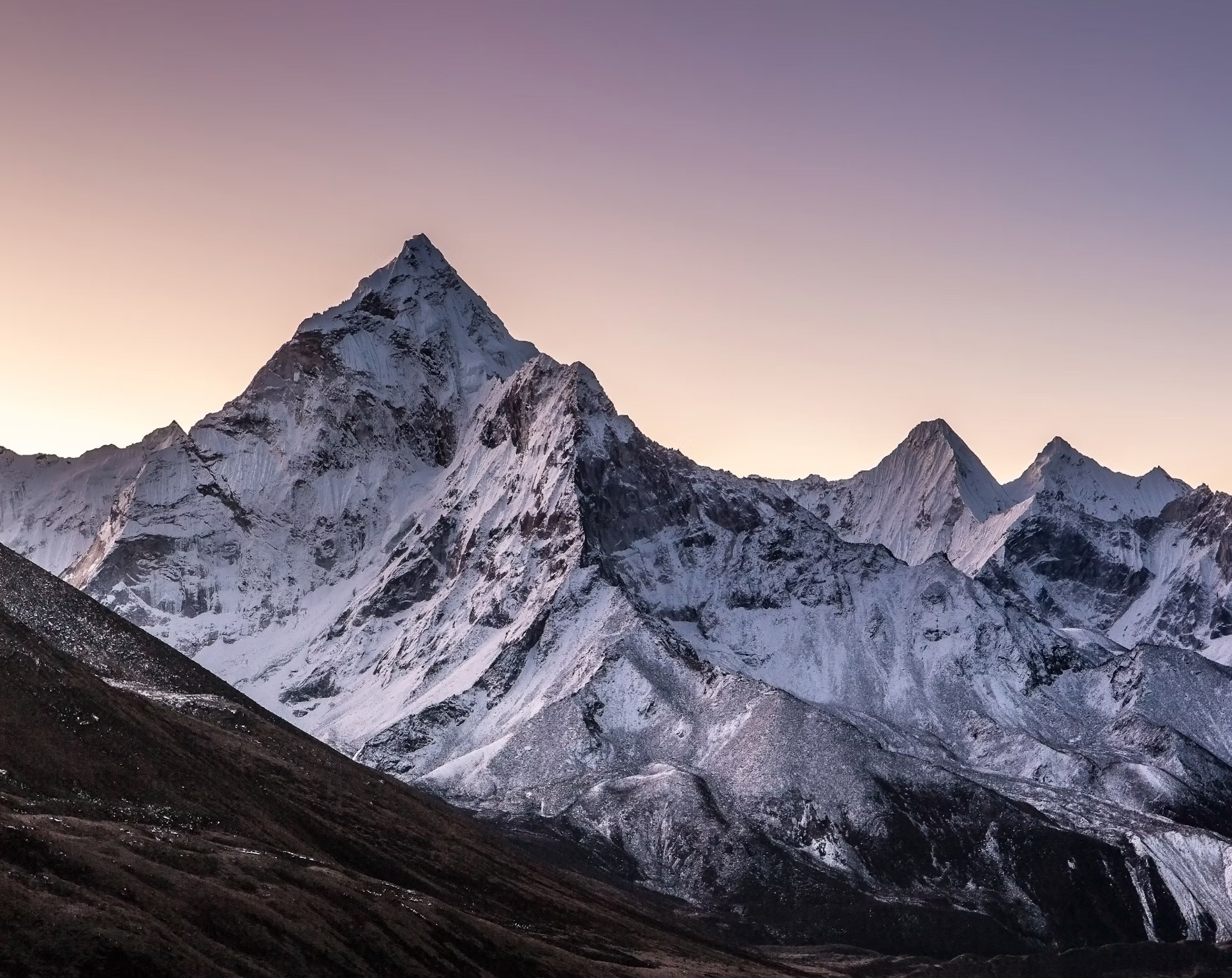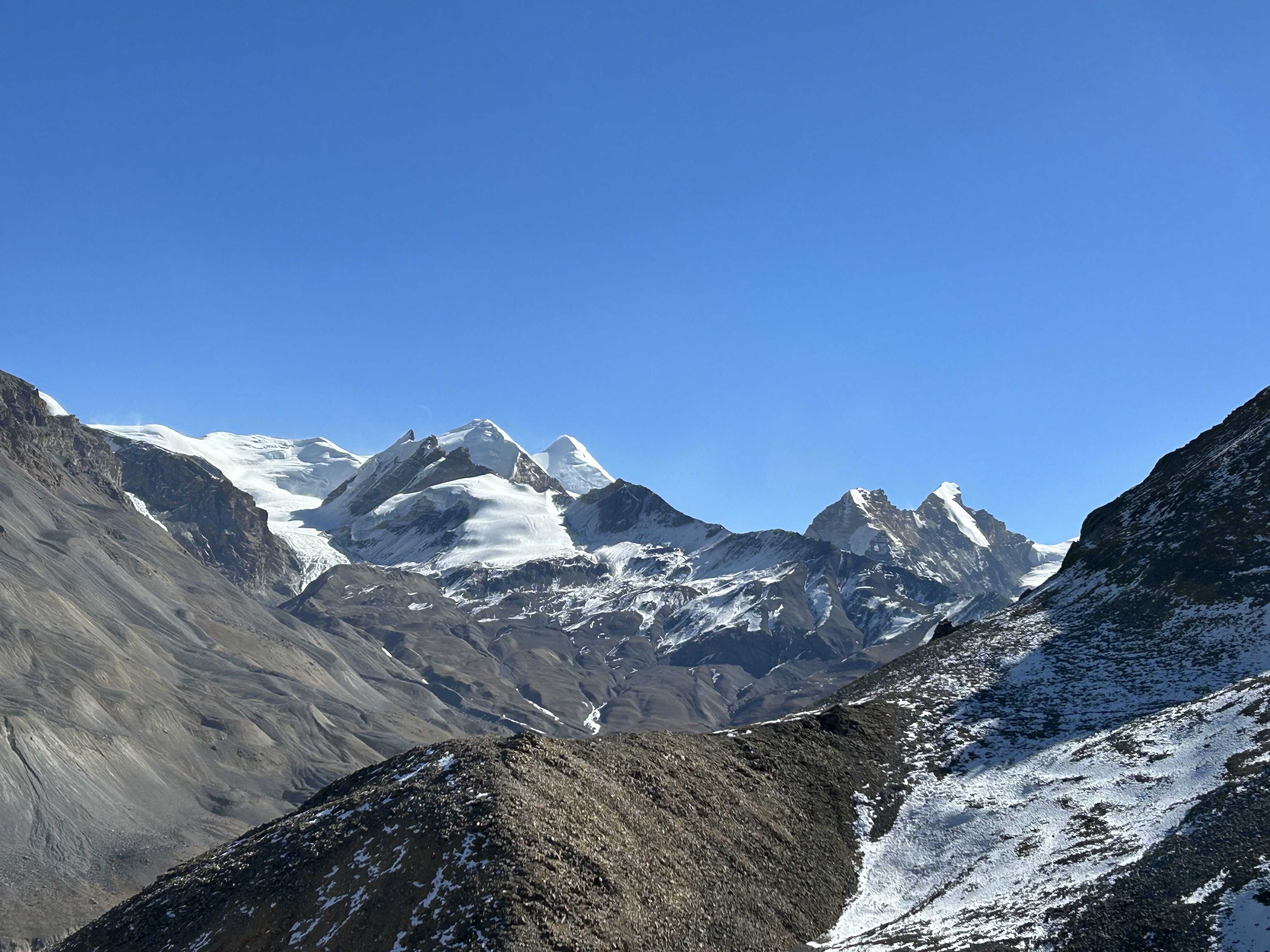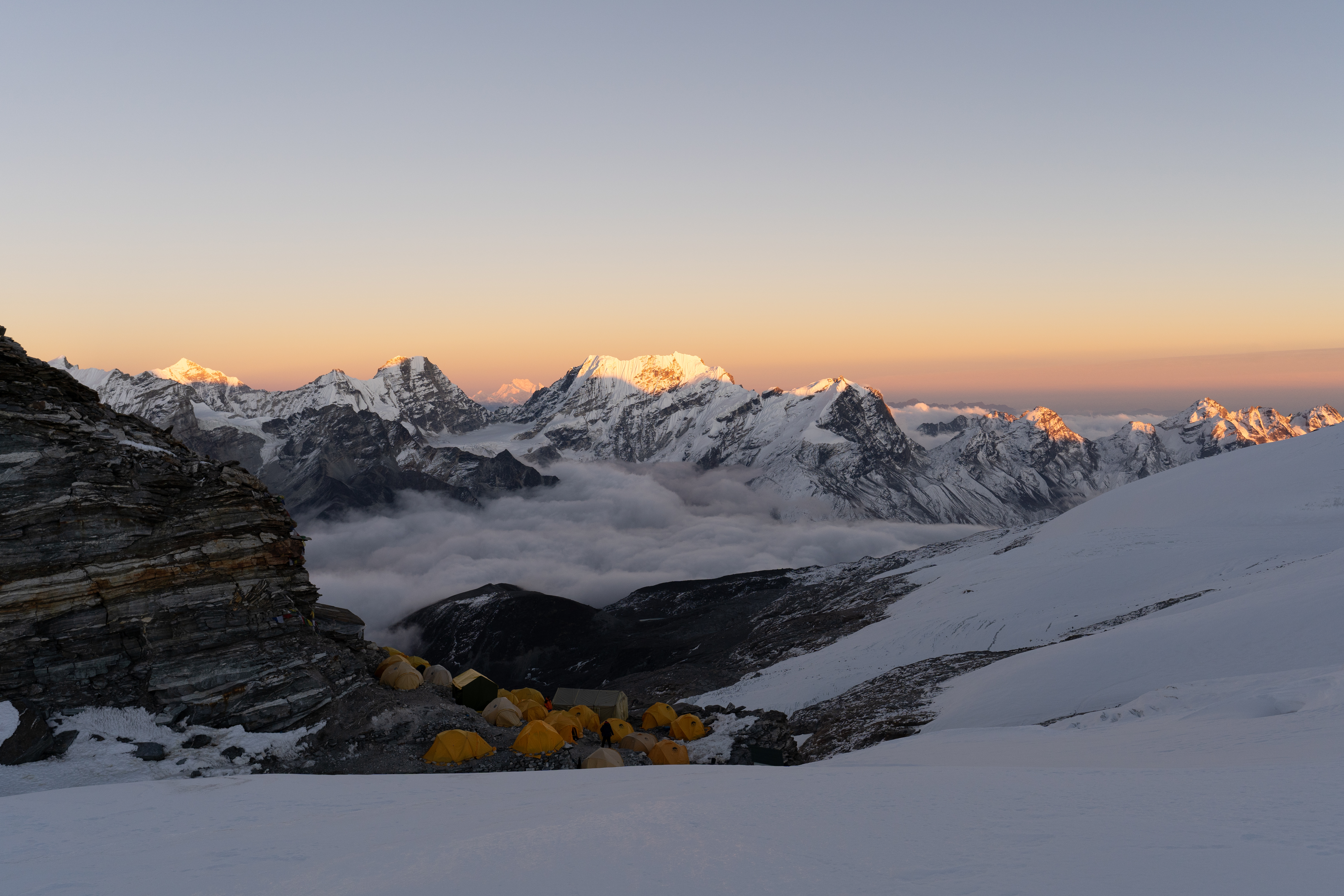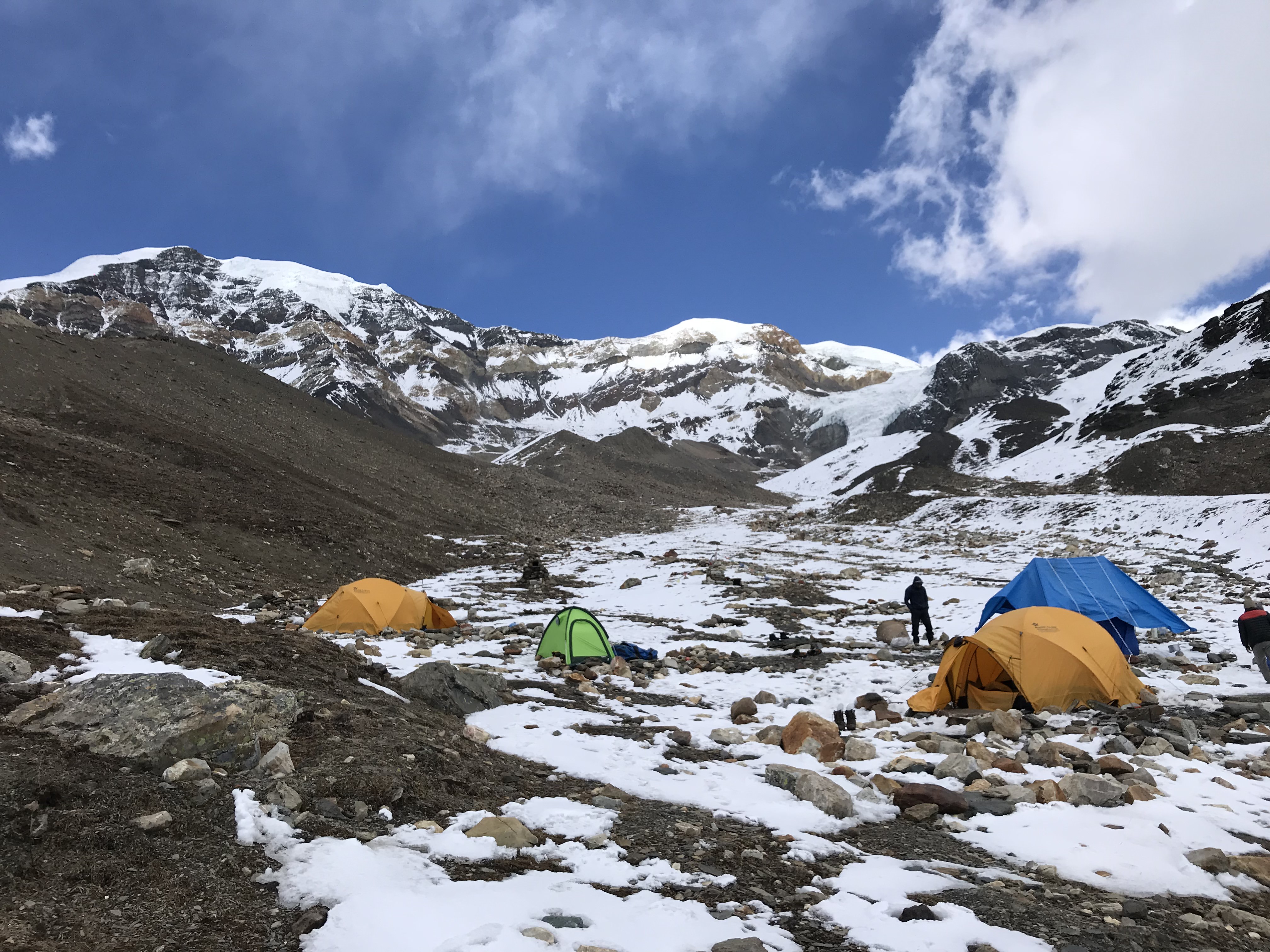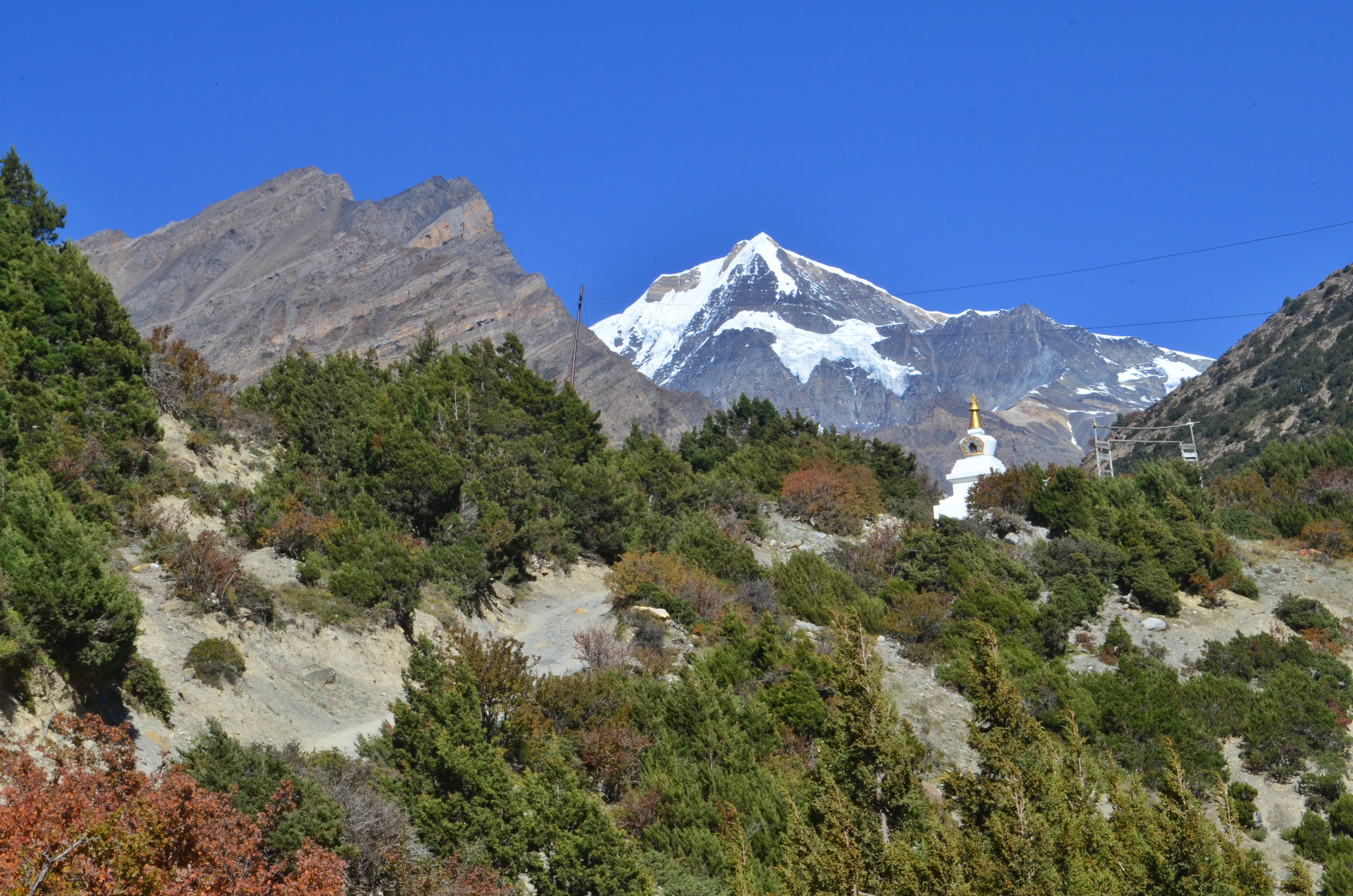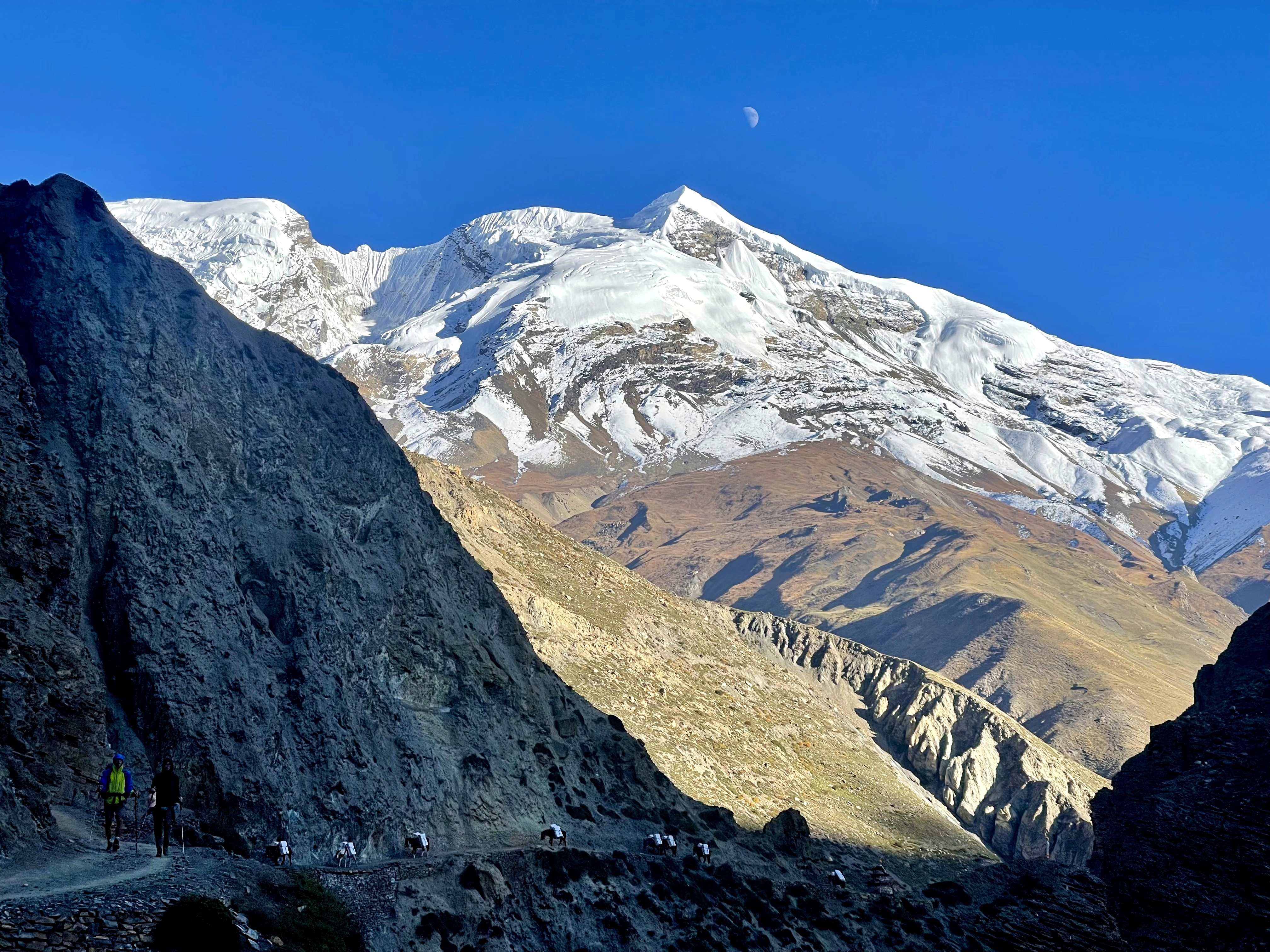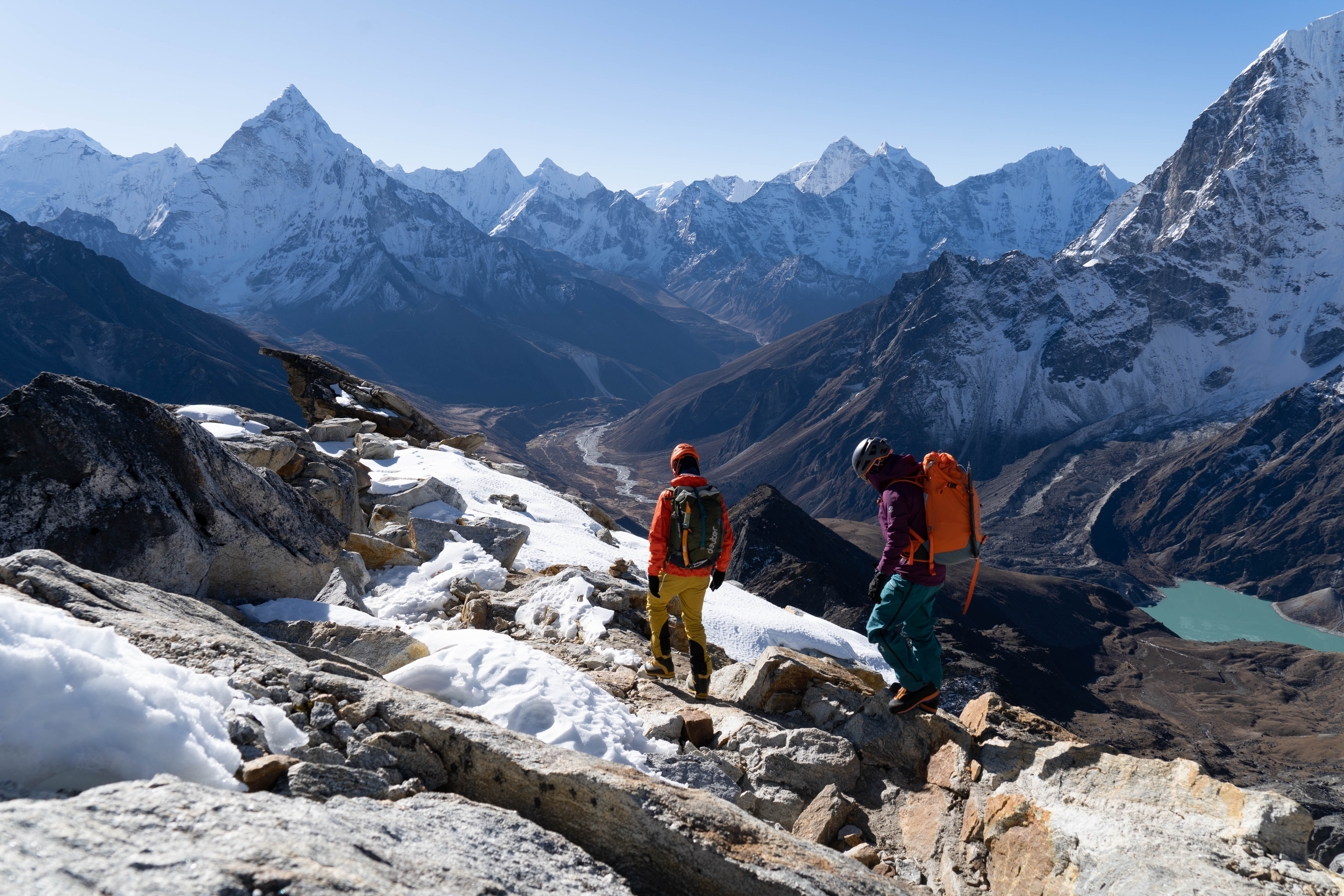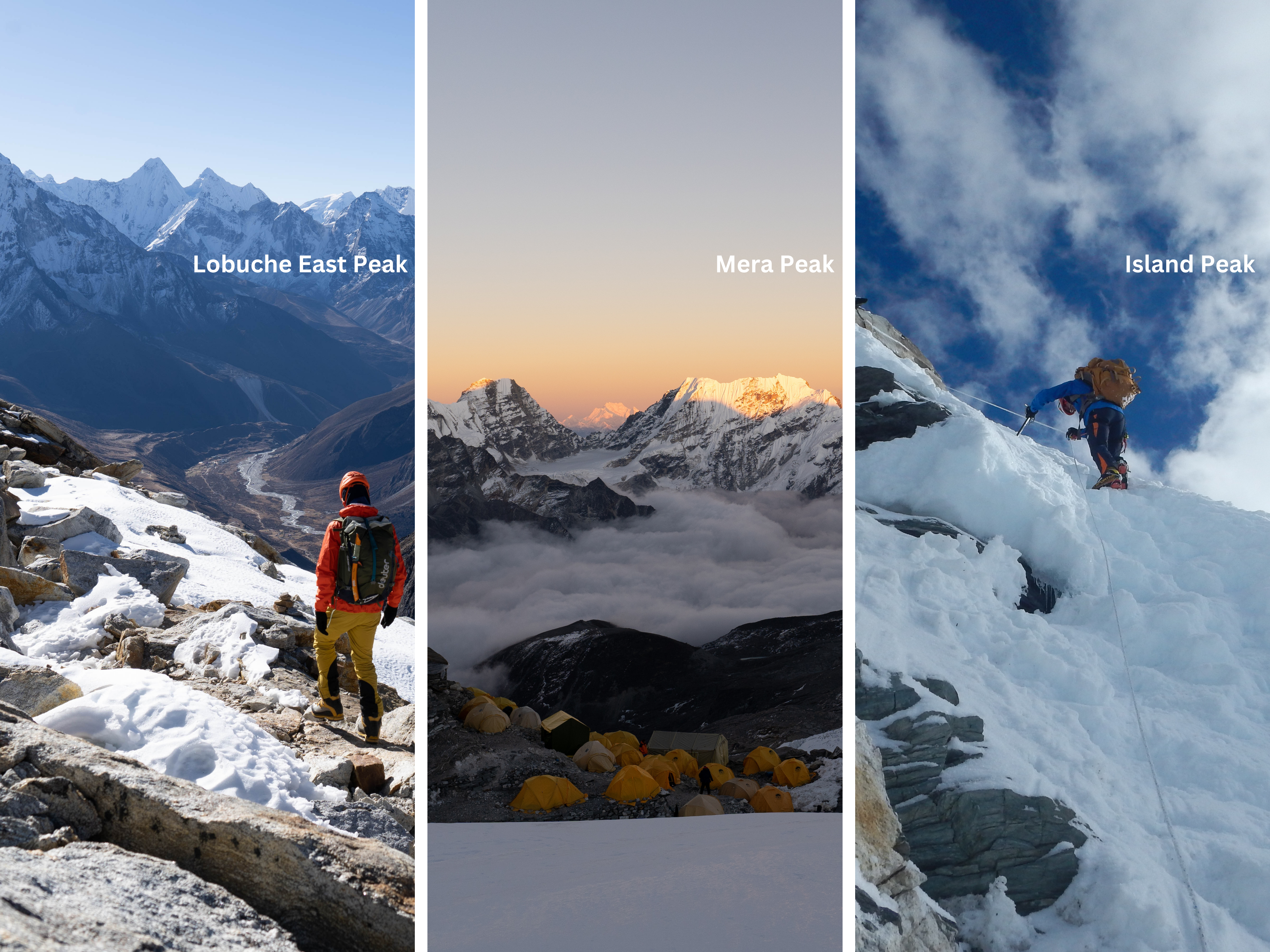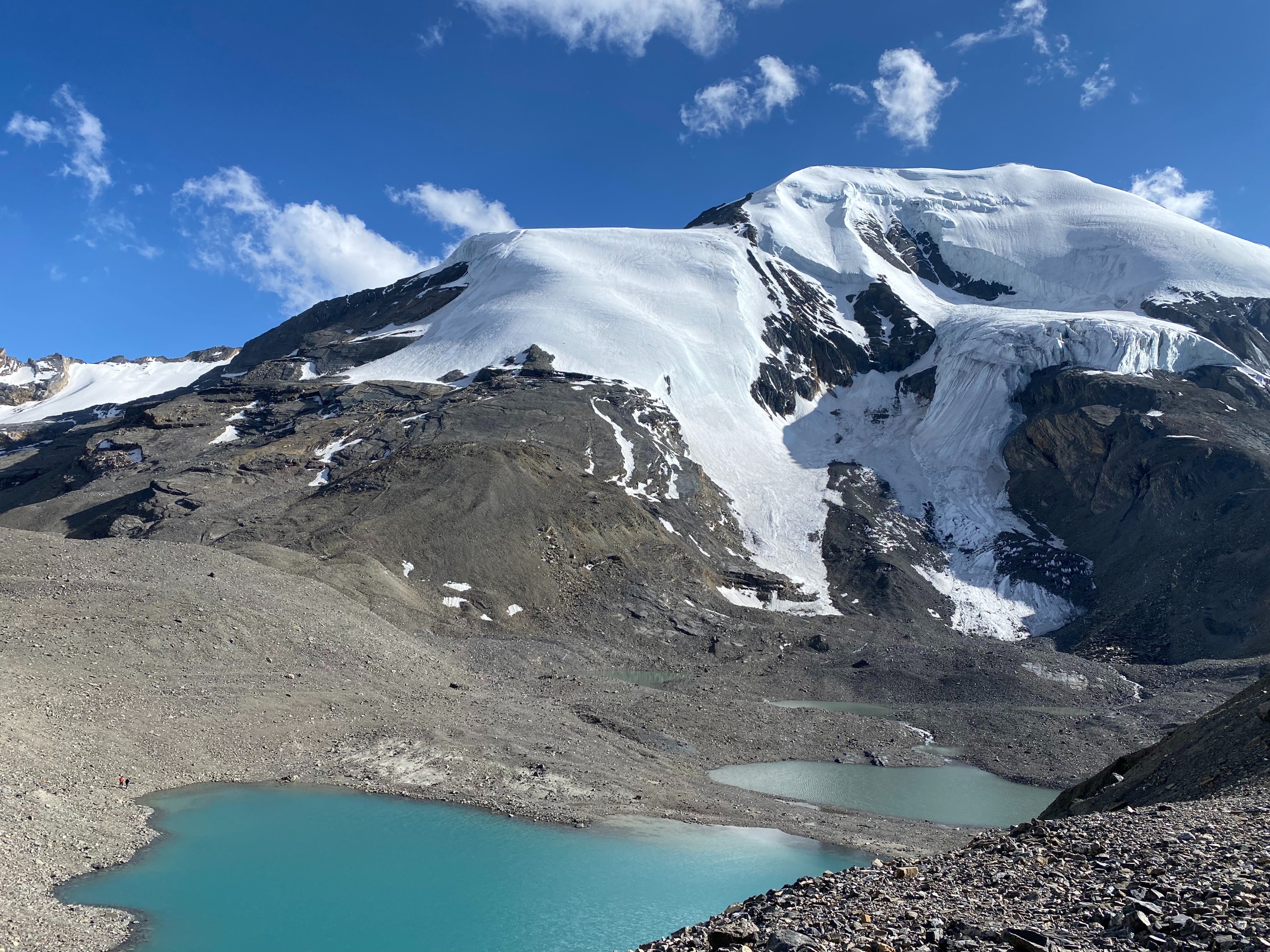Ama Dablam, often called the "Matterhorn of the Himalayas" because of its sharp, pyramid-like shape, is one of the most stunning mountains in Nepal. It stands tall at 6,812 meters (22,350 feet), with a smaller western peak reaching 6,170 meters (20,243 feet). This majestic mountain is not just a sight to behold—it also carries deep meaning. Its name, "Ama Dablam," translates to "Mother’s Necklace," as it resembles a mother extending her arms to protect her child. The glacier hanging from its southwest face called the Dablam, looks like the traditional pendant Sherpa women wear, which holds sacred images and symbolizes protection.
Ama Dablam is famous not only for its breathtaking beauty but also for the challenge it presents to climbers. The most common path to the top, the southwest ridge, is a thrilling yet difficult route that winds through steep rock, snow, and ice. This climb is not for beginners—it requires skill, experience, and determination. Along the way, climbers are rewarded with incredible views and a deep sense of accomplishment. Before attempting the summit, they stop at Base Camp, located at about 4,570 meters (15,000 feet), where they spend time adjusting to the high altitude and preparing for the tough climb ahead.
Ama Dablam climbing is best attempted in the ideal Ama Dablam climbing season, which falls either in spring (April to May) or in autumn (September to October). During these seasons, the weather is more stable, with clear skies and lower chances of storms, making it safer for climbers. Those who take on this adventure not only get the thrill of scaling one of the world’s most iconic peaks but also get to experience the rich culture and breathtaking nature of the region. The Ama Dablam expedition itinerary typically includes acclimatization days and technical training at Ama Dablam Base Camp before heading up the mountain.
But Ama Dablam is more than just a climber’s dream—it is also deeply meaningful to the Sherpa people. It stands proudly along the Ama Dablam trek and Khumbu region trekking routes, towering over the landscape like a spiritual guardian. The mountain is part of Sagarmatha National Park, a UNESCO World Heritage Site known for its incredible wildlife, forests, and dramatic scenery. For the people who live in its shadow, Ama Dablam is a symbol of their heritage, a sacred presence that adds to the magic of the Himalayas.
The first successful Ama Dablam ascent was made on March 13, 1961, by Mike Gill, Barry Bishop, Mike Ward, and Wally Romanes, who climbed via the southwest ridge. Since then, many climbers from all over the world have come to test their skills on its steep ridges and icy slopes. Ama Dablam mountaineering is considered one of the most technical climbing in Nepal, requiring experience in rock, ice, and snow climbing. Even today, Ama Dablam remains one of the most admired and respected mountains, drawing adventurers who seek both beauty and challenge.
The Ama Dablam expedition cost varies depending on factors such as the guiding service, logistics, and duration. Many Sherpa-guided expeditions are available, offering climbers the chance to experience Himalayan climbing expeditions with expert support. The Ama Dablam climbing route through the southwest ridge remains the most popular and challenging. Additionally, for those not aiming for the summit, the Ama Dablam base camp trek offers an exciting way to witness the mountain up close without technical climbing.
Nepal trekking adventures in the Everest region often include Ama Dablam, making it one of the highlights of Nepal mountain expeditions. Whether attempting an Ama Dablam summit or simply trekking to its base, adventurers will find themselves immersed in the awe-inspiring beauty and rich cultural heritage of this legendary peak.
